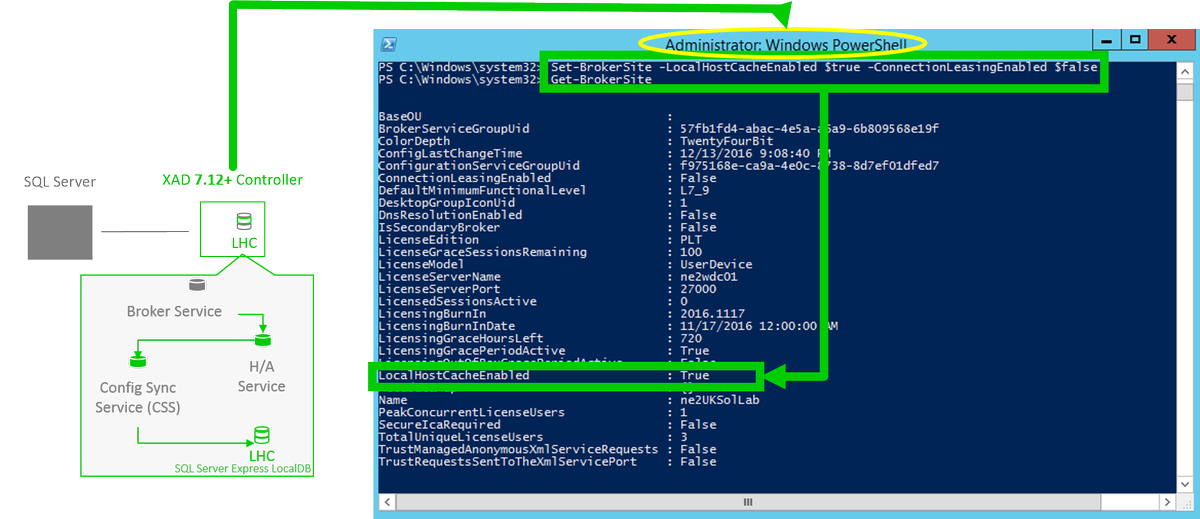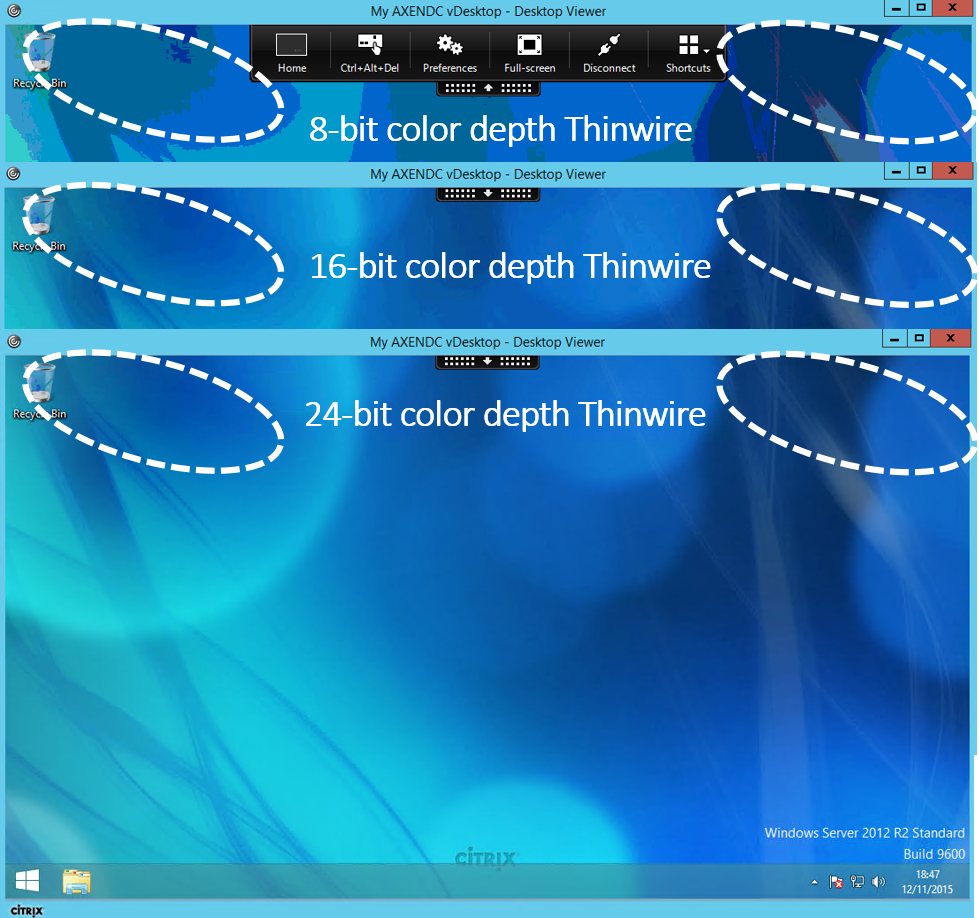The following content is a brief and unofficial prerequisites guide to setup, configure and test accessing secure by design virtual apps and desktops powered by XenApp & XenDesktop 7.15 prior to deploying a PoC, Pilot or Production environment by the author of this entry. The views, opinions and concepts expressed are those by the author of this entry only and do not necessarily conform to industry descriptions or leading best practises. The views expressed here are my own and do not necessarily reflect the views of Citrix.
Shortened Names
WEB INTERFACE – wif
LONG TERM SERVICE RELEASE – ltsr
CURRENT RELEASE – cr
FEDERATED AUTHENTICATION SERVICE – fas
SECURITY ASSERTION MARKUP LANGUAGE – saml
IDENTITY PROVIDER – idp
NETSCALER UNIFIED GATEWAY – nug
XENAPP – xa
PROVISIONING SERVICES – pvs
XENDESKTOP – xd
XENAPP/XENDESKTOP – xad
STOREFRONT – sf
What is the difference between LTSR vs. CR for XenApp & XenDesktop 7.x?
The Long Term Service Release (LTSR) program for XenApp and XenDesktop provides stability and long-term support for XenApp/XenDesktop releases while the Current Release (CR) provides customers with the very latest version of XenApp and XenDesktop which includes the latest innovations e.g EDT v2
XenApp & XenDesktop 7.15 LTSR Feature Summary Comparison with 7.6 LTSR
The following is a simple one PDF page document that lists all the feature capabilities from initial first LTSR which was XenApp & XenDesktop 7.6 Feature Pack (FP) 1-3 through to the current LTSR XAD 7.15 including the CR releases in-between so its absolutely worth booking marking in your browser or better yet download it to keep it to hand for customer conversations – https://www.citrix.com/content/dam/citrix/en_us/documents/data-sheet/xenapp-xendesktop-715-ltsr-feature-summary-comparison-to-76-ltsr.pdf.
Noteworthy Points What’s New vs. Excluded
I’d very strongly recommend that your read the following CTX article – https://support.citrix.com/article/CTX205549 entitled “CTX205549 FAQ: XenApp, XenDesktop, and XenServer Servicing Options (LTSR)” and to ensure that you remain compliant post your update/migration to 7.15 LSTR you should download the “CTX209577 Citrix LTSR Assistant” https://support.citrix.com/article/CTX209577
Its also worth noting the following that are classed as “Excluded Features/Components/OSes” from the XAD 7.15 LTSR but I’d like to stress PLEASE PLEASE refer for eDocs for full caveats vs. supporting statements at – https://docs.citrix.com/en-us/xenapp-and-xendesktop/7-15-ltsr/whats-new/7-15-ltsr-initial-release-.html+ and these listed notes are based upon the initial release however there is now a Cumulative Update 1 (CU1) already available so be sure to read through it as well at – https://docs.citrix.com/en-us/xenapp-and-xendesktop/7-15-ltsr/whats-new/cumulative-update-1.html.
OSes+
– Windows 2008 32-bit (for Universal Print Server)
Behavioural Changes
– Upgrading a XA 6.5 worker to a new 7.15 VDA is now slightly different and the detailed process is listed at – https://docs.citrix.com/en-us/xenapp-and-xendesktop/7-15-ltsr/upgrade-migrate/upgrade/upgrade-xenapp-6-5-to-vda.html and also be sure to review the XenApp 6.x Migration Tool at – https://docs.citrix.com/en-us/xenapp-and-xendesktop/7-15-ltsr/upgrade-migrate/xenapp-worker-upgrade.html and you review the migration tool by watching the embedded YouTube video below.
Finally while your planning your migration to XA 7.15 (FMA) from 6.5 (IMA) you will mostly likely be upgrading vs. migrating away from WIF so please be sure to read and how to migrate features to StoreFront from your WIF environment at – https://docs.citrix.com/en-us/storefront/3-12/migrate-wi-to-storefront.html. Equally I’d encourage any organisation reading this to review how-to setup and configure the “unified user experience” for Citrix Receiver vs. the Green Bubbles which will provide a much better experience for users you can enable it by quiet easily once you’ve read through the following article in eDocs at – https://docs.citrix.com/en-us/storefront/3-12/manage-citrix-receiver-for-web-site/unified-receiver-experience.html.
– Follow the supported leading best practises for upgrading the 7.15 LTSR by reviewing the following node within Citrix’s eDocs – https://docs.citrix.com/en-us/xenapp-and-xendesktop/7-15-ltsr/upgrade-migrate/upgrade.html
– VDA installation failures for Win 10 N Editions that don’t include Microsoft Media Foundation can now be acknowledged via the installation GUI of the VDA vs. automated deployed (unattended) there is a new option “/no_mediafoundation_ack“.
Excluded Features & Compoments+
– HDX Graphics Mode – Framehawk
– StoreFront Citrix Online Integration
– AppDisks
– Personal vDisk is excl for Win 7, 10
– Load balancing of Session Recording which was an experimental feature in 7.14
What’s Deprecated in the 7.15 LSTR
A full list of what is deprecated is available at – https://docs.citrix.com/en-us/xenapp-and-xendesktop/7-15-ltsr/whats-new/removed-features.html and I am only going to list a few points that I believe of most interest to those whom read my blogs or if your just a Citrix SysAdmin vs. Consultant reading this blog post.
– No VDA installations on Windows XP will be supported
– Flash Redirection ++Hello HTML5 GOODBYE Flash wahoo!
– Citrix Receiver for Web classic experience (“green bubbles” user interface) ++Oh YES double wahoo!
– VDAs on Desktop – Windows 10 version 1511 & Windows 7, 8.1 and for Server – Windows Server 2008 R2 and Windows Server 2012
– Legacy Thinwire + DirectX Command Remoting (DCR) switch to Thinwire ECM or Adaptive Display v2 see – https://docs.citrix.com/en-us/xenapp-and-xendesktop/7-15-ltsr/graphics/thinwire.html
– In-place upgrades of certain XAD infrastructure components aren’t supported!
– Studio on Windows 7
– Azure Classic support
++ Personal comment vs. note from the author of the post
XenApp and XenDesktop 7.15 LTSR baseline components
VDA for Desktop OS 7.15
VDA for Server OS 7.15
Delivery Controller 7.15
Citrix Studio 7.15
Citrix Director 7.15
Group Policy Management Experience 3.12
StoreFront 3.12
Provisioning Services (PVS) 7.15
Universal Print Server 7.15
Session Recording 7.15 (Platinum Edition only)
Linux VDA 7.15 (See the Linux VDA documentation for supported platforms)
Profile Management 7.15
Federated Authentication Service 7.15
7.15 LTSR Compatible Components and Platforms
AppDNA 7.15
Citrix SCOM Management Pack for License Server 1.2
Citrix SCOM Management Pack for Provisioning Services 1.19
Citrix SCOM Management Pack for StoreFront 1.12
Citrix SCOM Management Pack for XenApp and XenDesktop 3.13
HDX RealTime Optimization Pack 2.3
License Server 11.14.0 Build 21103
Workspace Environment Management 4.4
App Layering 4.3
Self-Service Password Reset 1.1
What’s New
– Machine Catalog’s functional level within your Site from 7.9 do not require an upgrade
– Machine Creation Services (MSC) now supports generation 2 VMs with Microsoft System Center Virtual Machine Manager SCVMM
– The FMA or 7.x version of Local Host Cache (LHC) is now enabled by default BUT note that if it was disabled from a prior release of the XAD 7.x then you need to enable it and disable Connection Leasing (CL) https://docs.citrix.com/en-us/xenapp-and-xendesktop/7-9/manage-deployment/connection-leasing.html which was initially introduced into the 7.x platform to provide a fallback if your SQL database connection was lost or unavailable until LHC was re-introduced in XAD 7.12 – https://docs.citrix.com/en-us/xenapp-and-xendesktop/7-12/manage-deployment/local-host-cache.html but was not enabled by default in the 7.12 release CL was primarily utilised.
– Director App Failure Monitoring – https://docs.citrix.com/en-us/xenapp-and-xendesktop/7-15-ltsr/policies/reference/virtual-delivery-agent-policy-settings/monitoring-policy-settings.html#App_Failure_Policy_Settings
Security Leading Best Practises
– General Overview https://docs.citrix.com/en-us/xenapp-and-xendesktop/7-15-ltsr/secure/best-practices.html.
– Securing your StoreFront 3.12 environment – https://docs.citrix.com/en-us/storefront/3-12/secure.html
– Standardise on a single organisation user identity platform e.g AAD by leveraging NetScaler + + StoreFront + FAS which can convert SAML vs. OAuth tokens into virtual smartcards per configured Store within StoreFront to then SSO a user onto there intended virtual apps & desktops without requiring to re-enter his/her in a directory username + password for that resource location (What’s this? Read – https://docs.citrix.com/en-us/citrix-cloud/citrix-cloud-resource-locations.html).
– Slightly obvious to an Citrix expert vs. Citrix Partner but its worth highlighting for newbies to Citrix virtualisation technologies is that XAD management provides Delegated Administration to manage just enough access for different members of the IT vs. compliance departments/business units to have just enough access to complete there daily vs. weekly vs. monthly activities vs. tasks – https://docs.citrix.com/en-us/xenapp-and-xendesktop/7-15-ltsr/secure/delegated-administration.html and for remote secure access to virtual apps & desktops you will need implement NetScaler Unified Gateway – https://docs.citrix.com/en-us/xenapp-and-xendesktop/7-15-ltsr/secure/storefront-netscaler.html which can also enable and allow your organisation to control authentication at the edge of your network e.g 2FA vs. MFA vs. using Biometrics with supported 3rd Citrix Ready solutions so check out – https://citrixready.citrix.com. Finally you can also engage with SmartAccess capabilties when fronting XAD for R/A with NUG so check out the following resources for NS 11.x.n – https://docs.citrix.com/en-us/netscaler-gateway/11/integrate-web-interface-apps/ng-smartaccess-wrapper-con/ng-smartaccess-xd-config-con.html and NS 12.x.n – https://docs.citrix.com/en-us/netscaler-gateway/12/integrate-web-interface-apps/ng-smartaccess-wrapper-con/ng-smartaccess-xd-config-con.html and there is also a CTX article entitled “CTX227055 Smart Access Guide for NetScaler Gateway, StoreFront and XenDesktop” to review at – https://support.citrix.com/article/CTX227055 and finally you can configure Pre-Authentication scans to check that the connecting end-point is compliant (Refer to VDI Handbook section below).
– Enabling TLS or Transport Layer Security for ICA/HDX Session – https://docs.citrix.com/en-us/xenapp-and-xendesktop/7-15-ltsr/secure/tls.html for a detailed how-to from the first LTSR check out the following blog article at – https://www.citrix.com/blogs/2014/12/11/how-to-secure-ica-connections-in-xenapp-and-xendesktop-7-6-using-ssl/ or download the white paper entitled “Citrix XenApp and XenDesktop 7.6 LTSR FIPS 140-2 Sample Deployments” from – https://www.citrix.com/content/dam/citrix/en_us/documents/about/citrix-xenapp-and-xendesktop-76-fips-140-2-sample-deployments.pdf. During some research I also came across the following CTX article to disable TLS 1.0 for XAD 7.6 LTSR which may or may not be useful to you check out – https://support.citrix.com/article/CTX215447.
– How do I assign the right vs. relevant security or UX policy? Refer to the built-in policy templates which you can read at – https://docs.citrix.com/en-us/xenapp-and-xendesktop/7-15-ltsr/policies/policies-templates.html which include the same policy type for modern vs. legacy OSes.
Citrix VDI Handbook for the 7.15 LTSR
Recommended pages of interest to read from “Citrix VDI Best Practices for XenApp and XenDesktop 7.15 LTSR” – https://docs.citrix.com/content/dam/docs/en-us/xenapp-xendesktop/7-15-ltsr/downloads/Citrix%20VDI%20Handbook%207.15%20LTSR.pdf which I am commonly asked about so I thought it makes sense with the current LTSR to list them out here for everyone to focus on what is right vs. relevant for PoC’s e.t.c
– Page 11 which focus on CCS Methodology
– Page 32 Five-Layer Design Model and Conceptual Architectures for XAD environments
– Page 35-37 Site topology covering latency, bandwidth vs. number of users
– Page 50-52 covers StoreFront keywords to the behaviour of the delivery of virtual resoucres
– Page 52 Scaling vs. sizing of your StoreFront cluster
– Page 54 Calculate what NetScaler required SSL through-put however i’d strong recommended engage with your Citrix rep for leading best practise vs. guidance as this can/may differ dependant upon your choose appliance vs. firmware version.
– Page 58 Implement GSLB with HDX Optimised routing to ensure connecting users in a regional vs. global deployment connect to better NUG by proximity.
– Page 63 HDX Display Protocol
– Page 66- User Profile types for Local, Roaming, Mandatory & Hybrid vs. virtual apps & desktop chooses model
– Page 79 Built-in Policy templates to optimise the UX based upon your organisational requirements
– Page 88-93 vCPU/RAM/Storage I/O vs. User workload types light, medium and heavy
– Page 94-97 SQL database sizing vs. scaling 5K up to 15K including expected database growth
– Page 98-99 PVS SQL database guidance for suggested sizing
– Page 104 XAD Controller sizing vs. scaling per 5K users which also includes a calculation
– Page 105 LHC considerations if enabled to re-size your control infrastructure for XAD
– Page 107 Citrix Cloud connector sizing for 5K users in private vs. public cloud
– Page 113-116 SQL Database sizing
– Page 121-129 PVS Accelerator with XenServer
– Page 132-140 Hardware Formulas for sizing vs. scaling including GPU(s)
Deploying a XAD 7.15 LSTR PoC
Coming…
What Citrix Receiver & HDX Optimisation Pack should I deploy?
You should consider reviewing and if fit for purpose for your organisation implement the Windows 4.9 LTSR Citrix Receiver version – https://docs.citrix.com/en-us/receiver/windows/4-9.html along with if you utilise Skype for Business for UC the LTSR of the HDX Optimisations Pack – https://docs.citrix.com/en-us/hdx-optimization/2-4-ltsr.html and you can find out more information about the lifecycle at – https://support.citrix.com/article/CTX200466.




